Idea by
Sofia Karim
NA
Call for ideas 2020
An Architecture of Disappearance
An Architecture of Disappearance
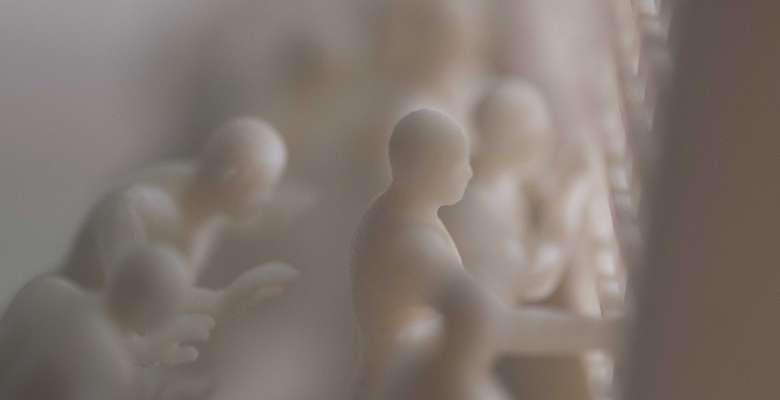
- New alliances
Whilst most art forms including literature, poetry and music, have been used as a language of struggle and resistance, architecture has largely refrained. Jazz for example, embodies the pain of slavery, transforming it to beauty. Architecture prefers abstract associations with the human condition.
The imprisonment of my uncle, photographer Shahidul Alam, by the government of Bangladesh, changed my entire outlook on architecture. Insight into the hidden world of disappearances, imprisonment and authoritarianism led towards a new language - an ‘Architecture of Disappearance’.
I seek to bring architecture closer to the human condition, through confrontation with the pain of history and the present. This includes race, and forces of labour that construct our buildings (particularly migrant labour). Architects must interrogate their own relationship with power. Ideals of beauty, truth and transcendence, nor true environmental sustainability, cannot be achieved otherwise.
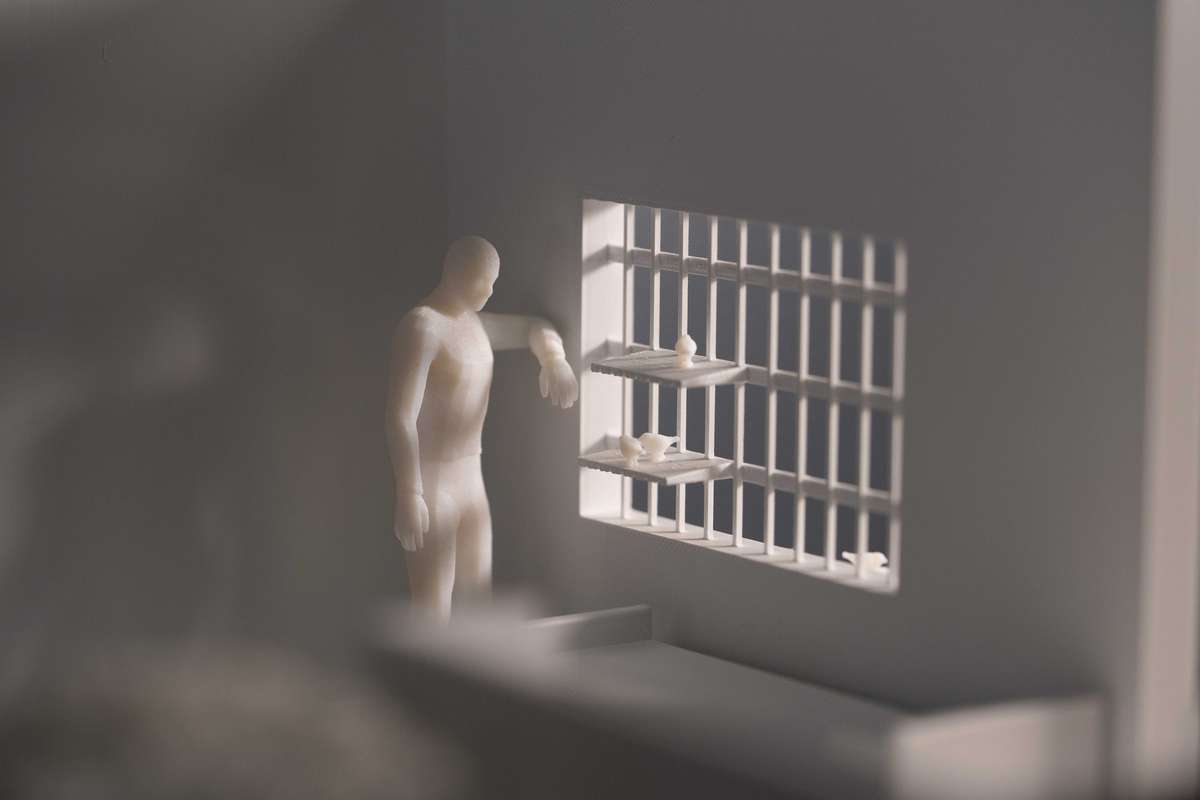
Memories of Keraniganj Jail - Shahidul feeding Sparrows/ Architecture of Disappearance
(A series of models based on my uncle’s memories of jail and my imagination)
I window came to Shahidul’s window cell. He fed it. Soon it brought its family and they grew bold enough to fly into his cell.
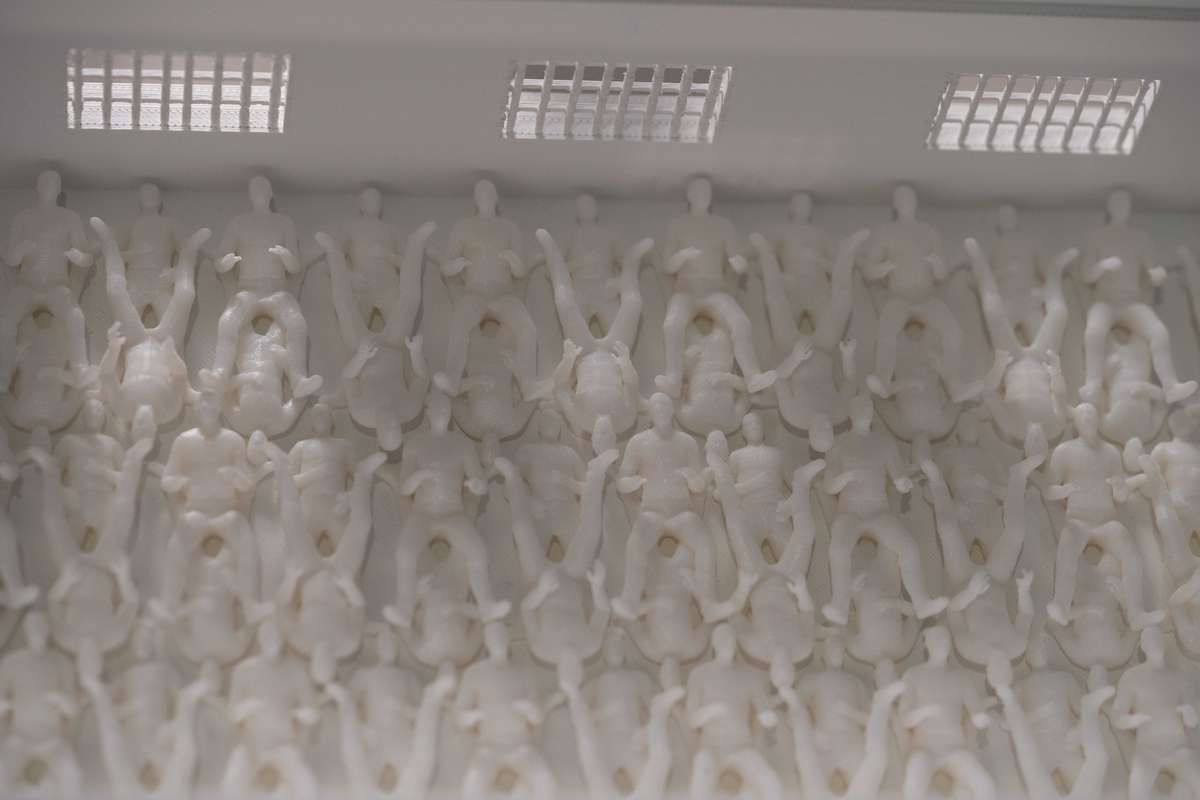
Memories of Keraniganj Jail - Amdani Cell/ Architecture of Disappearance.
The Amdani cell holds upto 350 prisoners. To pack bodies in, prisoners lie in specific patterns. In kechki file, pairs of prisoners lie opposite each other, groin-to-groin, wrapping their legs around one another. Those who pay extra can lie in ilish file, where each prisoner is allocated ten inches of space. They lie on their sides, slotting their bodies together.
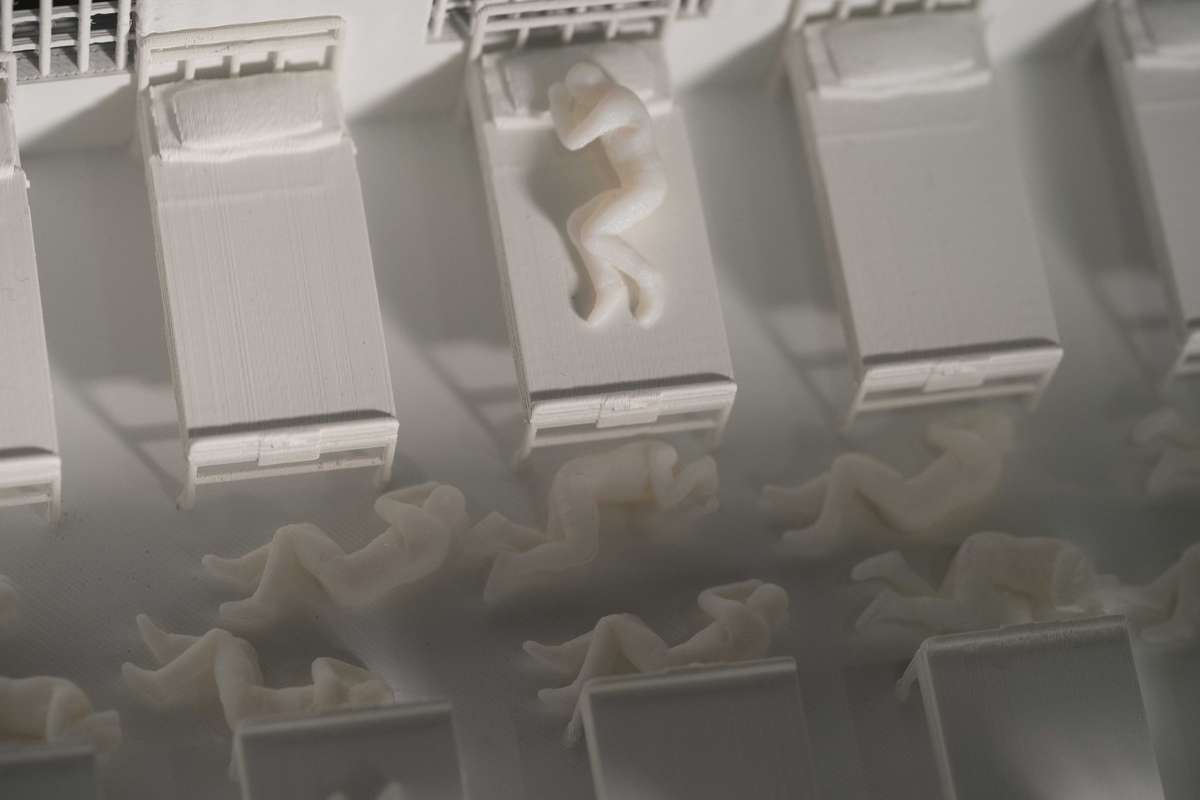
Memories of Keraniganj Jail - Hospital/ Architecture of Disappearance.
(A series of models based on my uncle’s memories of jail and my imagination).
Shahidul was suffering from breathing difficulties, jaw pain, watery eyes, and psychological trauma (including flashbacks) in his cell. He was unable to chew solid food. He was admitted to prison hospital.
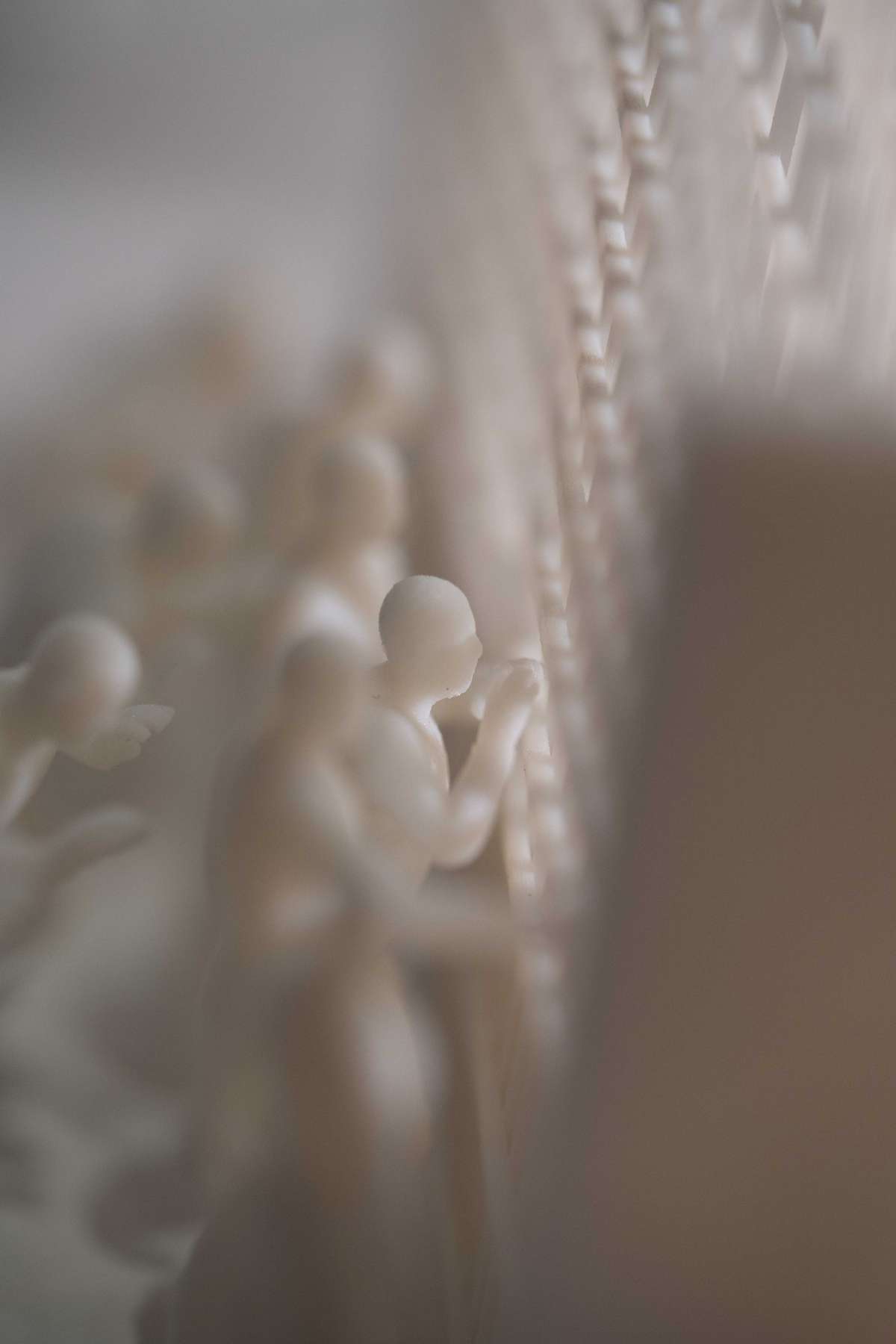
Memories of Keraniganj Jail - Kichir Michir Architecture of Disappearance.
(Models based on my uncle’s memories of jail and my imagination).
The visiting room is a communal space. Prisoners and visitors are divided by three layers of grilles. Prisoners, around 60 in number, heave and jostle, pressing against the grilles to catch a glimpse of their loved ones. It is almost impossible to communicate above the
screaming din. We came to call this space kichir-michir.
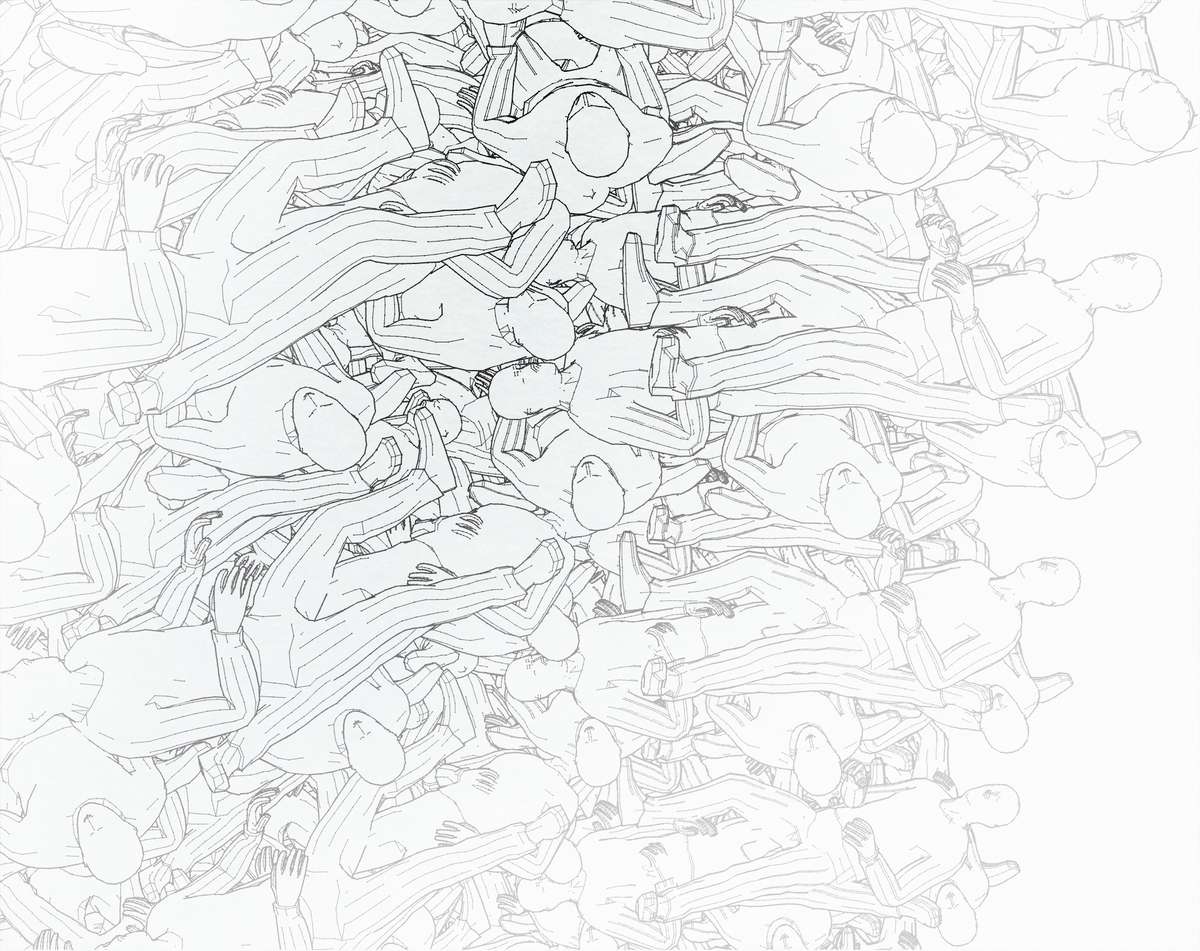
Amdani cell, Keraniganj jail. Bodies pressed against bodies. Poses so intimate I can only try them with my children, in effort to understand. I draw the bodies in various ways: sometimes as solids and sometimes as vectors projected in space. I draw the same thing for months. And after some time I realise that when I’m drawing the Amdani Cell, I’m not only drawing this instance, but every such instance: the stacking of bodies - dead, alive, or barely alive - the final phases of human subjugation.
An Architecture of Disappearance
An Architecture of Disappearance

- New alliances
Whilst most art forms including literature, poetry and music, have been used as a language of struggle and resistance, architecture has largely refrained. Jazz for example, embodies the pain of slavery, transforming it to beauty. Architecture prefers abstract associations with the human condition.
The imprisonment of my uncle, photographer Shahidul Alam, by the government of Bangladesh, changed my entire outlook on architecture. Insight into the hidden world of disappearances, imprisonment and authoritarianism led towards a new language - an ‘Architecture of Disappearance’.
I seek to bring architecture closer to the human condition, through confrontation with the pain of history and the present. This includes race, and forces of labour that construct our buildings (particularly migrant labour). Architects must interrogate their own relationship with power. Ideals of beauty, truth and transcendence, nor true environmental sustainability, cannot be achieved otherwise.
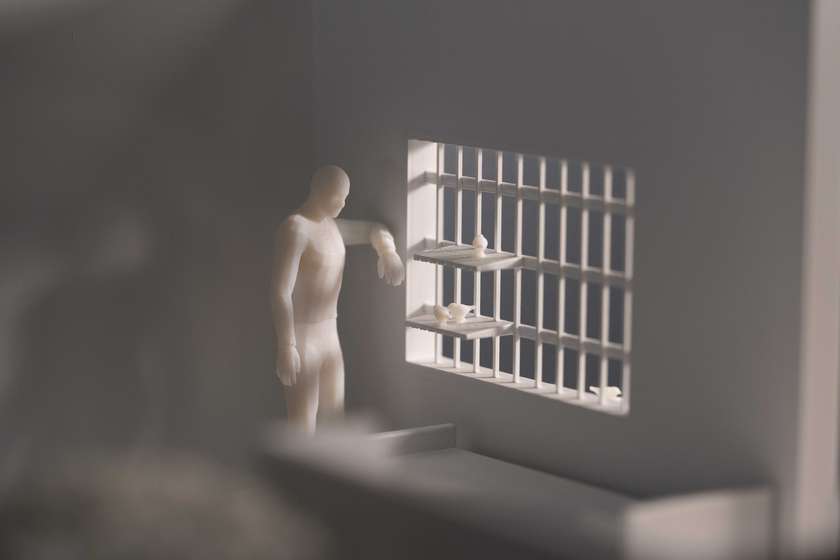
Memories of Keraniganj Jail - Shahidul feeding Sparrows/ Architecture of Disappearance
(A series of models based on my uncle’s memories of jail and my imagination)
I window came to Shahidul’s window cell. He fed it. Soon it brought its family and they grew bold enough to fly into his cell.
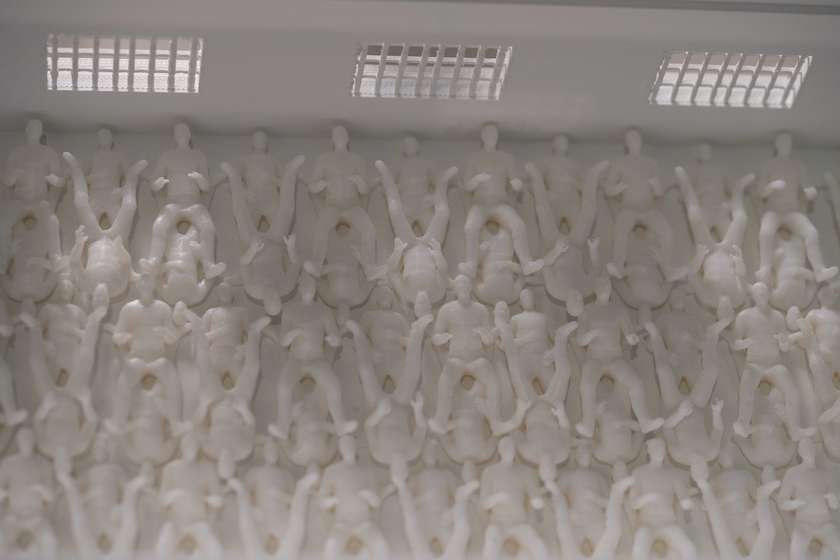
Memories of Keraniganj Jail - Amdani Cell/ Architecture of Disappearance.
The Amdani cell holds upto 350 prisoners. To pack bodies in, prisoners lie in specific patterns. In kechki file, pairs of prisoners lie opposite each other, groin-to-groin, wrapping their legs around one another. Those who pay extra can lie in ilish file, where each prisoner is allocated ten inches of space. They lie on their sides, slotting their bodies together.
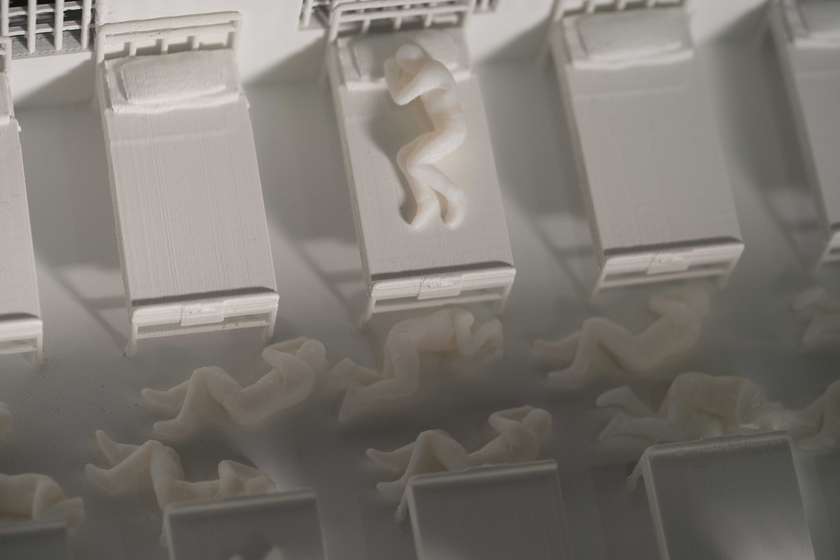
Memories of Keraniganj Jail - Hospital/ Architecture of Disappearance.
(A series of models based on my uncle’s memories of jail and my imagination).
Shahidul was suffering from breathing difficulties, jaw pain, watery eyes, and psychological trauma (including flashbacks) in his cell. He was unable to chew solid food. He was admitted to prison hospital.

Memories of Keraniganj Jail - Kichir Michir Architecture of Disappearance.
(Models based on my uncle’s memories of jail and my imagination).
The visiting room is a communal space. Prisoners and visitors are divided by three layers of grilles. Prisoners, around 60 in number, heave and jostle, pressing against the grilles to catch a glimpse of their loved ones. It is almost impossible to communicate above the
screaming din. We came to call this space kichir-michir.
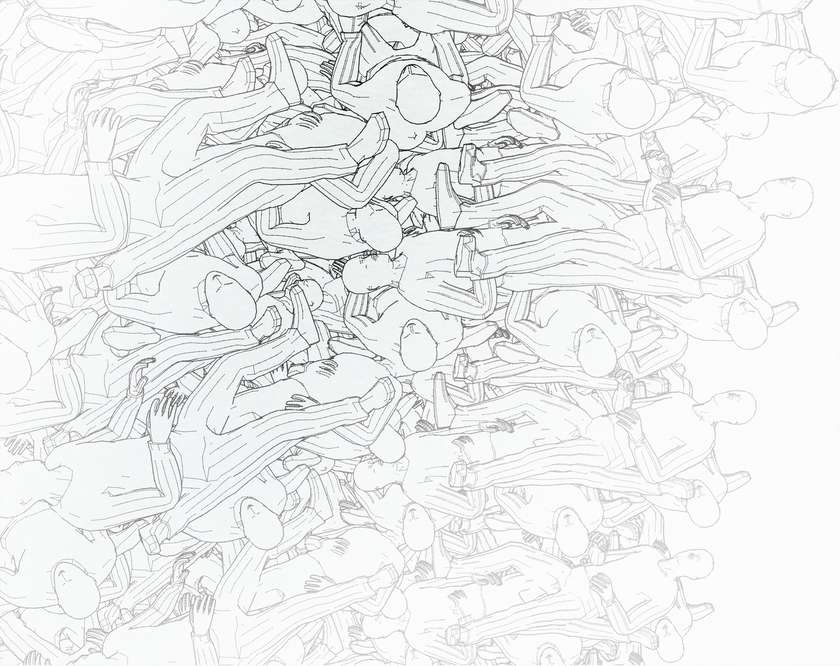
Amdani cell, Keraniganj jail. Bodies pressed against bodies. Poses so intimate I can only try them with my children, in effort to understand. I draw the bodies in various ways: sometimes as solids and sometimes as vectors projected in space. I draw the same thing for months. And after some time I realise that when I’m drawing the Amdani Cell, I’m not only drawing this instance, but every such instance: the stacking of bodies - dead, alive, or barely alive - the final phases of human subjugation.